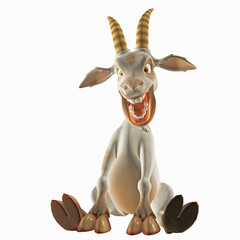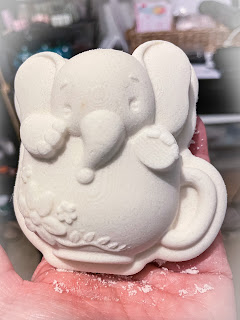Goat Milk Soap vs Other handmade soap
I've been waiting to do this post for quite some time. I wanted to do my research on this subject and give it a fair comparison before I did.
The reason for this post is because I had a person come up to me at a show that said she will only use goat milk soap because it is ph balanced for your skin. Honestly, at that time, I didn't have the knowledge to argue with her, and B, I was caught off guard and dumbfounded that I basically just said, ok I don't sell "goat milk soap".
Technically, I do sell goat milk soap, but not strictly. I use many different milk powders in my soap recipes; goat, coconut, and buttermilk. All of which are amazing for your skin. They give a silkiness to the bubbles and a creamy glide on your skin. Not to mention all of the benefits that milk has to offer.
Here's a link to some information I found on goat milk for skin. Now, you noticed I said goat milk, NOT goat milk soap. https://www.healthline.com/health/beauty-skincare/goat-milk-skin-care#fatty-acids-probiotics-and-vitamins
To sum up what I read, goat milk has the same ph as human skin. Goat milk contains fatty acids that help repair the skin barrier and contribute to noticeably softer skin, probiotics to encourage the growth of normal skin flora, and vitamin A to help gently exfoliate.
So, yes, goat milk has the same ph as skin, but when put in soap, there's a chemical reaction that happens between the fats and lye called saponification.
The Definition of Saponification: Saponification is a process that involves the conversion of fat, oil, or lipid, into soap and alcohol by the action of aqueous alkali. Soaps are salts of fatty acids, which in turn are carboxylic acids with long carbon chains.
Goat milk is reported to be comprised of 3.9% fat. This concentration may be higher or lower, depending on where you source your goat milk from. If goat milk is comprised of 3.9% fat, this means that there is about 4g of fat for every 100g of goat milk.
"The optimal pH value of skin on most of our face and body lies between 4.7 and 5.75. A pH of 7 (that of pure water) is considered neutral. Anything below that is acidic and above it alkaline, so skin's natural pH is mildly acidic."
"When making soap, it is highly unlikely you will ever see a ph lower than 7. Due to the nature of lye as an alkali, it just won't happen. Essentially, you're looking for your soap to be a PH of between 7-10, although if someone does have sensitive skin, aim for an 8 or 9."
So, with all of this having been said, to sum it up... ALL SOAP will have a ph between 7-10, no matter if it's made with goat milk, or just plain water.
To test this theory, I purchased 2 bars of goat milk soap when my husband and I went on a mini vacation.
I also took some of my soaps that I made using various other milks, including goat milk powder.
Here are my findings... visually so you will know I am not making this up.
Goat Milk Soaps from Bemidji MN...
BubbleHunter Soaps Soaps. To be fair, I used some that have been cured for awhile, and some that are still curing.
And here, you will see ALL of the test strips are exactly the same ph.
- Goat Milk soap ph is exactly the same as any cold process soap
- The skin feel of the Bemidji soap was drying due to the lack of skin beneficial oils, butters and additives. BubbleHunter soaps were very silky and creamy and have a great skin feel.
- The bubbles were meh on the Bemidji soaps, where the bubbles on BubbleHunter soaps were big, silky and creamy.
Thanks for the read. I hope this gave you a little more insight on goat milk soap vs BubbleHunter soaps. :)















Comments
Post a Comment